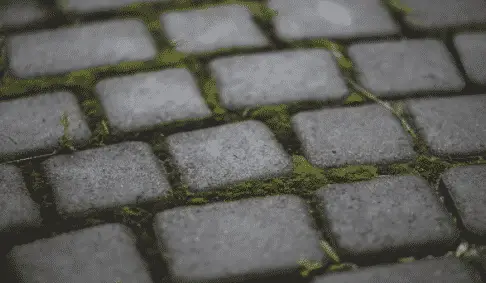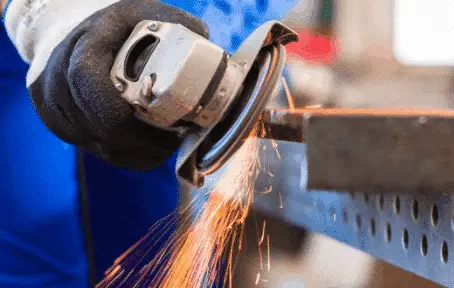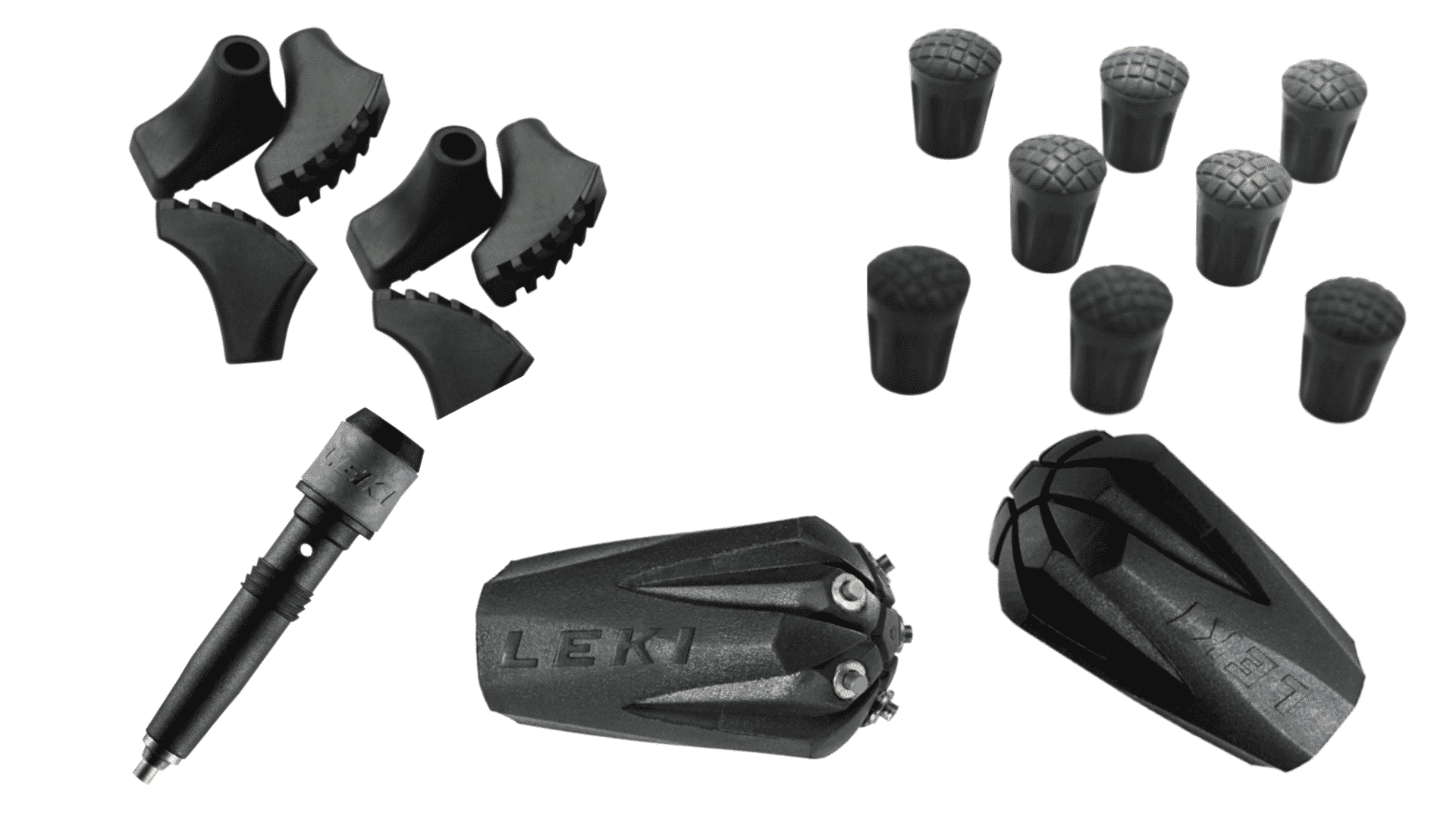Rubber trekking pole tips are terrible in rough terrain, but I constantly see people using them. They don’t work in wet grass, mud or snow. So why use rubber tips on trekking poles.
Rubber tips improve traction on hard surfaces like roads and sidewalks. They also help protect your carbide tips on rough surfaces and reduce noise. Rubber trekking pole tips are cheap so you definitely pick up a set.
If you use trekking poles on sidewalks and roads I highly recommend picking up a set of Leki Rubber Trekking Pole Tips (pictured below). It seems like they last forever and they slip right on the end of your trekking poles. They improve traction, protect the tips of your poles and pop right off when you get back onto the trail.
Why Should I Use Rubber Tips On Trekking Poles?

All trekking poles come from the factory with metal/carbide tips. They were designed to provide traction on soft natural surfaces like dirt, mud, snow, ice, but they’re terrible on hard surfaces.
They slip/slide on rocks and leave ugly scratches all over the sidewalk. If you do a lot of hiking on hard sidewalks and roads I highly recommend buying a set of rubber tips.
Whether or not you actually need rubber tips depends on where you’re hiking. If you spend a lot of time hiking on sidewalks, asphalt, cement and rocks definitely go with rubber. Spend all your time out in the mud and dirt carbide is a better option.
Rubber tips significantly decrease the wear on your poles, improves traction on hard surfaces and reduces scratches on solid surfaces. Some famous landmarks like Machu Picchu actually require rubber tips to prevent damage.
1) Improve Traction on Hard Surfaces

Have you ever tried to use carbide poles on a wet sidewalk? The tips will end up slipping every time you put down the poles. This isn’t a big deal most of the time, but you could potentially fall.
Carbide is great on soft surfaces like dirt, mud, snow, etc, but it’s terrible on hard surfaces. Rubber offers way more traction on asphalt, cement, brick and cobblestone. You don’t get that uneven wobble every time you set down the poles.
If you don’t want to give up the traction metal provides you can even choose a hybrid spiked rubber tip. I have a set of Leki’s Studded Rubber Tips and I really love them. They really cut down the slipping/sliding on solid surfaces without sacrificing grip on soft ground. It’s the best of both worlds!
Check out my post explaining the benefits of all the different types of trekking pole tips.
2) Protect The Tips On Your Poles

Carbide poles are great on the trail, but they just don’t hold up on hard surfaces. If you do a lot of walking on hard surfaces(cement, asphalt, cobblestone, indoors) you will quickly grind down the tips on your poles.
With every single step you take you’re grinding more metal off the end of your pole. Rubber will greatly extend the life of your factory tips saving you a lot of time/money in the long run.
Constantly replacing the carbide tips on your poles is a serious pain in the butt. They’re expensive and it’s kind of a pain in the butt. The following video will show you how to replace your carbide tips.
3) Rubber Has Less Noise

That constant clicking and clacking of carbide on cement all day long could drive you crazy. Over the course of a long day that noise starts to get super annoying. It’s like having an earworm stuck inside you head that you just won’t go away.
Rubber seriously cuts down on the sound your trekking poles make as you walk. It goes from being a constant click-clack-click-clack to a fraction of the sound your shoes make as you walk. You can barely even hear them.
4) Rubber Tips are Easy to Replace
Replacing carbide/metal tips is possible, but it’s a serious pain in the butt. Every single pole style has its own way of removing the tips. Sometimes they click in, and other times you need glue. You might even need to get out a saw and cut the end off.
When a rubber tip wears down you just pull it off and stick a new one on. It’s that easy! I always carry a couple of cheap rubber spares in my pack just in case the tips fall off as I hike(this rarely happens).
High quality rubber tips by Leki and Black Diamond are basically the same price as carbide replacements. What you are doing is saving a lot of time and effort since you won’t have to replace the factory tips.
5) Rubber Tips Can Be Cheap

If you’re putting serious mileage on your pole (like 1000 miles per year) you probably want to buy expensive name brand tips. My regular old Leki vulcanized rubber tips have lasted well over 500 miles without showing much wear.
Generic tips like the ones you find on Amazon were designed to be disposable. At less than 1 buck each these rubber tips will easily get you 50+ miles (40 hours) before they start to fall apart. That’s farther than most people hike in their lifetime.
6) Protect The Ground

Carbide/metal tips poke holes and scratch up surfaces with every step you take. Parks with high-visitor rates really end up getting torn up as more people walk the trail.
Although the damage to rocks, sidewalks, etc is mostly cosmetic it does ruin the experience for the next person. It’s kind of like graffiti on a bathroom door. It doesn’t affect the way the toilet works, but you don’t want to look at it.
They’re also nice when transitioning through public buildings. Rubber tips can be used indoors in places carbide would most likely damage. No more scratches on hardwood/tile floors.




